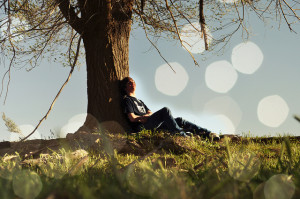David Heinemeier Hansson wrote an interesting critique of Test Driven Design two days ago. I understand where he’s coming from with his concern that mindlessly shaping all design around tests can (will?) lead to poor design in some areas. It was interesting, and I like to be challenged and think about these things. Personally, I think his extrapolation to proposing “TDD is Dead” is hyperbole. Here are my thoughts on the bits of his blog that jumped out at me…
“But the testing pyramid prescribes that the unit level is where the focus should be, so people are sucked into that by default.”
It’s probably true that some people are sucked into always defaulting to the unit level. The problem with that is the “always”, but the unit level is where the focus should be. Why? Because that is where the complexity lives – in each unit. The reason we separate code into units is to separate complexity into simpler, composable parts. Testing exhaustively at non-unit levels (i.e. by integrating components) requires a combinatorial explosion of tests… or not testing exhaustively (might be a viable option at your work, but not at a payments company). We use integration tests as well, but I don’t typically use them to prove all facets of functionality, instead only to prove the components integrate correctly and can deliver the core functions.
“Controllers are meant to be integration tested, not unit tested.”
I work in the Java world, not the Rails world, and I completely agree with this. When I started at Tyro, we were writing unit tests for controllers and integrated web tests for the presentation (i.e. JSPs) of most features as well. The result? All controller code was tested twice. (It’s pretty hard to test a JSP without hitting its controller.) There’s a dirty word to describe this practice: waste. We ditched controller tests a long time ago now and no one has ever missed them. Controllers are still tested, just not by unit tests. From time to time, some logic in a controller might get a bit complex, resulting in more paths than are practical to web test. The solution is easy there: extract that complexity into another class, unit test the complexity, and web test the integration. Controllers should never be complex. A David points out, they are mostly just an adapter layer between models and views. Let any kind of business logic complexity live in there and it’s got two responsibilities. Your goal should be to make controllers so simple that they don’t need unit tests.
“Finally, the fear of letting model tests talk to the database is outdated”
Yes, and no. Yes, there should not be a fear of testing against the database. In fact, there should be a preference towards it. Not testing against real databases (the same ones you’ll use in Production) leaves a big fat layer of assumptions in your app. However, in large systems with lots of database interaction and great test coverage you can quickly max out the build time if you use the database everywhere. My thoughts: have a preference for DB-backed testing, but not at the expense of developer productivity. The team needs to be aware of when the preference is damaging their velocity and find the balance. I’ve written a lot of data-heavy, back-end Java, so mileage with Ruby on Rails may vary (maybe it never becomes a problem).
“Above all, you do not let your tests drive your design, you let your design drive your tests!”
I don’t think it’s this simple. One great advantage of using tests to drive design is that your desire for simple tests commutes to an implementation of simple classes. Yes, you can probably achieve similar outcomes by doing some more thinking or drawing, but test-first is also a useful tool for driving towards this goal. Not the only tool, or a required tool, but a useful tool. I write lots of simple code at home and rarely write tests for it, but recently I found one part I was writing was a bit gnarly so I decided to write a unit test for it. Upon starting to write the test, I found I wasn’t able to because of the design of the code, and when I thought about the design for a second I realised I was mashing several responsibilities into the one place. Tests can drive designs to bad places, but in my experience they more often drive them to good places.
I often re-iterate to my team that testing is primarily about building confidence in the code, and secondly about building a safety net for those who pass this way next. There is no mandate in TDD for writing tests that do not build confidence (do you TDD getter methods?), or for spending hours on tests that increase confidence by small fractions. I think David is right that there are probably zealots out there who are blindly going down these kinds of paths. Perhaps he’s right that some designs are bastardised by having stringent testability requirements, though I don’t recall seeing a lot of this in my travels. So, he’s right that mindlessly shaping all design around tests can have bad effects, but no software developer should be doing anything mindlessly. I think there is value in letting tests shape your design much of the time, so long as one keeps in mind that there will be occasions where the tests have to be shaped by the design instead.
Everything in moderation, right? Including moderation.
 Confession of a Chronic Futurist
Confession of a Chronic Futurist
 Software Architecture Agility
Software Architecture Agility Cameron Barrie (
Cameron Barrie (
 He spent some time discussing the Palchinsky principles, from Russian engineer Peter Palchinsky as documented in
He spent some time discussing the Palchinsky principles, from Russian engineer Peter Palchinsky as documented in 
 Jez Humble (
Jez Humble ( Michael T. Nygard
Michael T. Nygard Hadi Hariri is a Developer and Technical Evangelist at
Hadi Hariri is a Developer and Technical Evangelist at